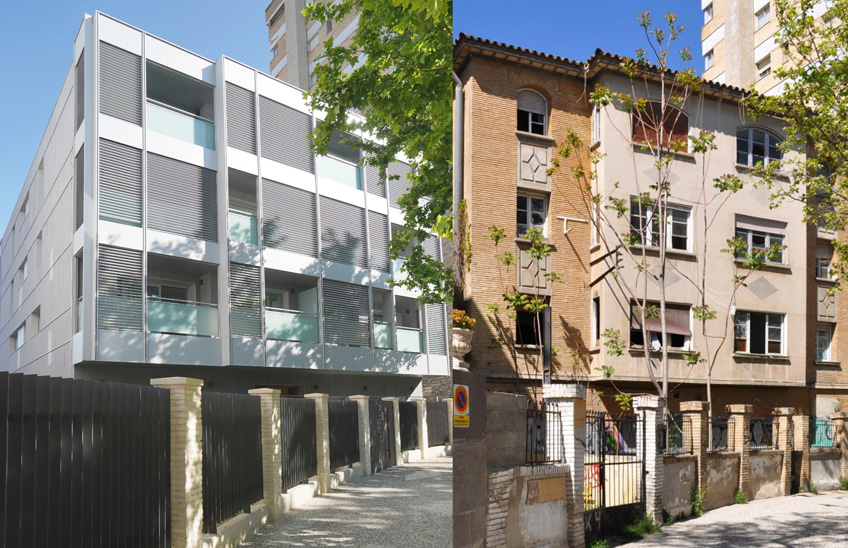Increasing their height could cost the rehabilitation of 58% of the dwellings and convert them into Nearly Zero Energy Buildings.
A thesis of the University's School of Architecture shows that in neighborhoods such as Iturrama or Ensanche it would cover 100% of the rehabilitation costs.

FotoMarcosdel Pozo/María Elena Aparicio has defended her thesis doctoral thesis at the School of Architecture
30 | 04 | 2021
María Elena Aparicio, a graduate in Architecture and new doctor from the University of Navarra, has studied how to design, simulate and evaluate the profitability of increasing the height of the existing housing stock in Navarra with the aim of achieving the economic viability of its rehabilitation. goal . "The 58% of the housing stock in Spain, which was built before the first rules and regulations of thermal requirements came into force in 1979, could be converted with very little expense or expense zero in Nearly Zero Energy Buildings (EECN) or Zero Energy Consumption Buildings (EEN), as required by Directive 2010/31/EU", details the Navarrese architect.
The European Union, in the framework of the Kyoto protocol (1998) and the Paris agreement (2015), has established requirements for the reduction of global greenhouse gas emissions. Among the generating sectors, 40% of total energy consumption is accounted for by buildings. "Hence, reducing consumption and using renewable sources has become a priority to achieve the decarbonization of the European building stock. And even more so in Spain, which is one of the countries with the largest housing stock in Europe," stresses the new doctor.
One of the main barriers to boosting energy savings in the housing stock is cost. "If we take into account that 70.4% of the stock is multifamily housing and that more than half was built after the rules and regulations thermal requirement, the potential for savings and the need for rehabilitation in our country is enormous. In this status, increasing the height is a solution that can activate energy rehabilitation, as is already being carried out in many European countries, thanks to the profit from the sale of the new living space generated," explains María Elena Aparicio.
Savings of 100% if more than one plant is built
In her research the new PhD in Architecture from the University of Navarra has carried out an energy and cost-effective analysis considering different measures on the envelope, heat production systems, renewable energy systems and the possibility of changing the equipment inside the houses for other more energy efficient ones. "By doing so, savings of between 56 and 84% of the total primary energy consumption can be achieved with respect to the existing building without renovation," he emphasizes.
On the other hand, María Elena Aparicio stresses that the location of the building is a factor core topic of viability of these actions: "According to the classification of the neighborhoods of Pamplona according to the sale prices of new housing, an intervention in height as the one proposed in neighborhoods with lower sale prices, such as Chantrea or San Jorge, could be loss-making, while in others with high sale prices, such as Iturrama or Ensanche, it would cover between 40 and 80% of the intervention. However, if we apply measures such as reducing the investment cost of the increase or extend more than one floor, 100% of the rehabilitation would be covered in almost all neighborhoods".
"In addition, in my research I have not taken into account the additional co-benefits, such as the revaluation of the houses due to the improvement of their condition, accessibility, interior comfort or the reduction of annual energy costs that have not been included in the economic balance". "If these measures were considered as benefits of the investment", concludes the Navarre architect, "the balance would be more positive in all cases".




